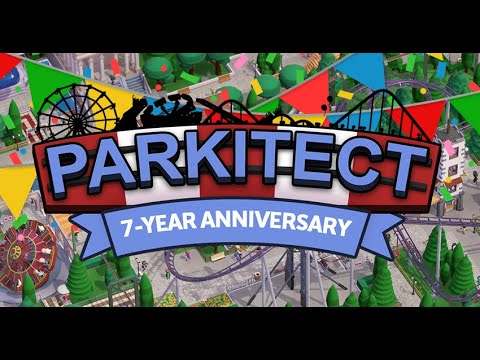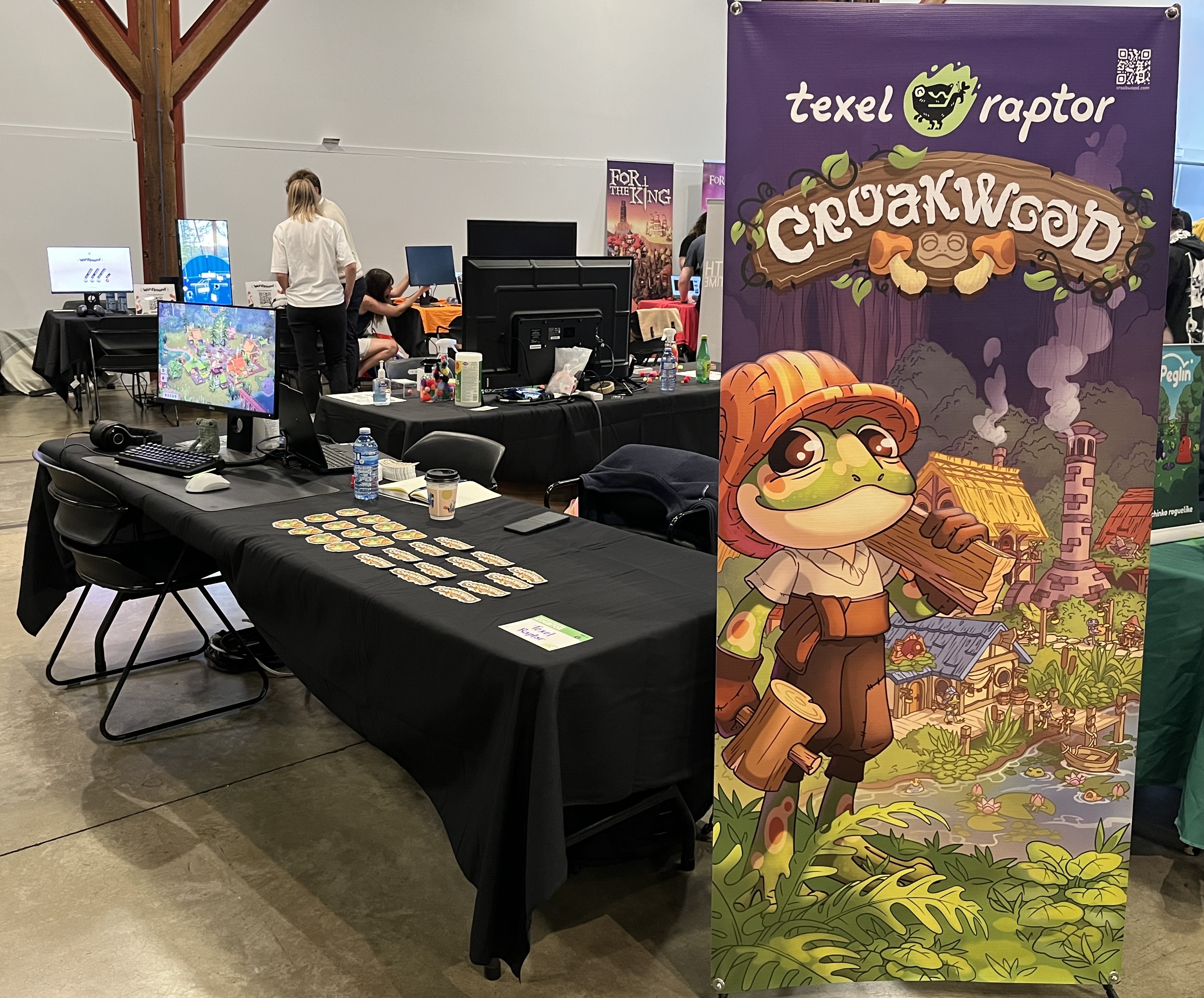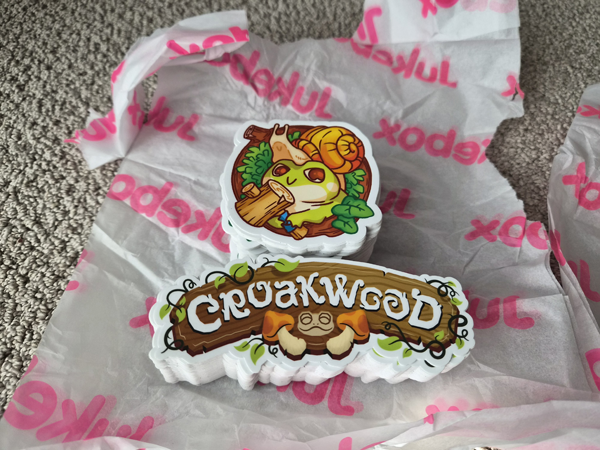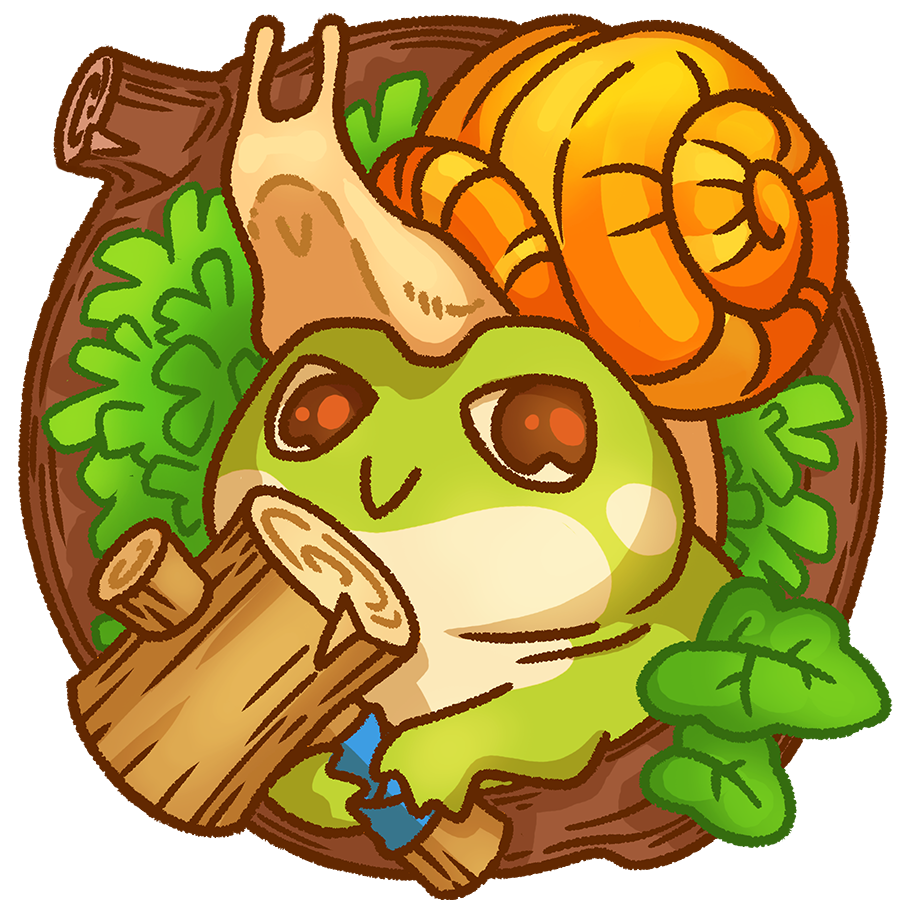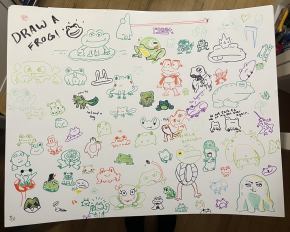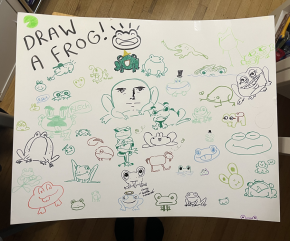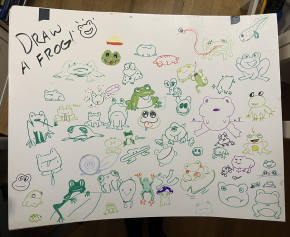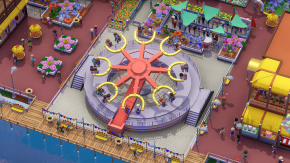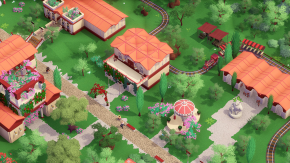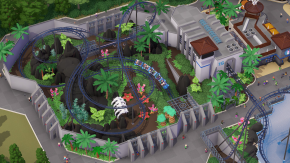Today marks a very special day for us—it’s been seven years since Parkitect was released! So much has happened since we first started developing the game. Join us on a trip down memory lane as we celebrate by looking back at how Parkitect came to be and how it evolved along the way.
April 2014 - First prototype
Parkitect first started back in March of 2014. I (Sebastian) had always been interested in game development and always had some sort of game-development-related hobby project going just for the fun of it, usually trying to learn something new with each project I picked up.
I also read the TIGSource forums a lot, a forum that was quite active at the time with a lot of devlog posts from many indie developers that have since gone on to make great games like Celeste and Minecraft. I had not done anything with 3D graphics or with a proper game engine so I wanted to give that a try. I was also often thinking about my favorite theme park games and what I wished they’d do better. I wanted to try some ideas out so I downloaded Unity and had a fun little coaster going around a loop after a few days. I shared it on the TIGSource forums and got a very positive response and encouragement to keep developing it into a full theme park game.

I was hesitant at first because it sounded like an impossible task, and it was clear that working on this would only make sense if the game is different enough from the theme park management games that came before it in a meaningful way. After giving it a bit more thought I saw a lot of things that could be improved over the old games and had some ideas for additions that sounded interesting to me (like the resource deliveries for the stores).
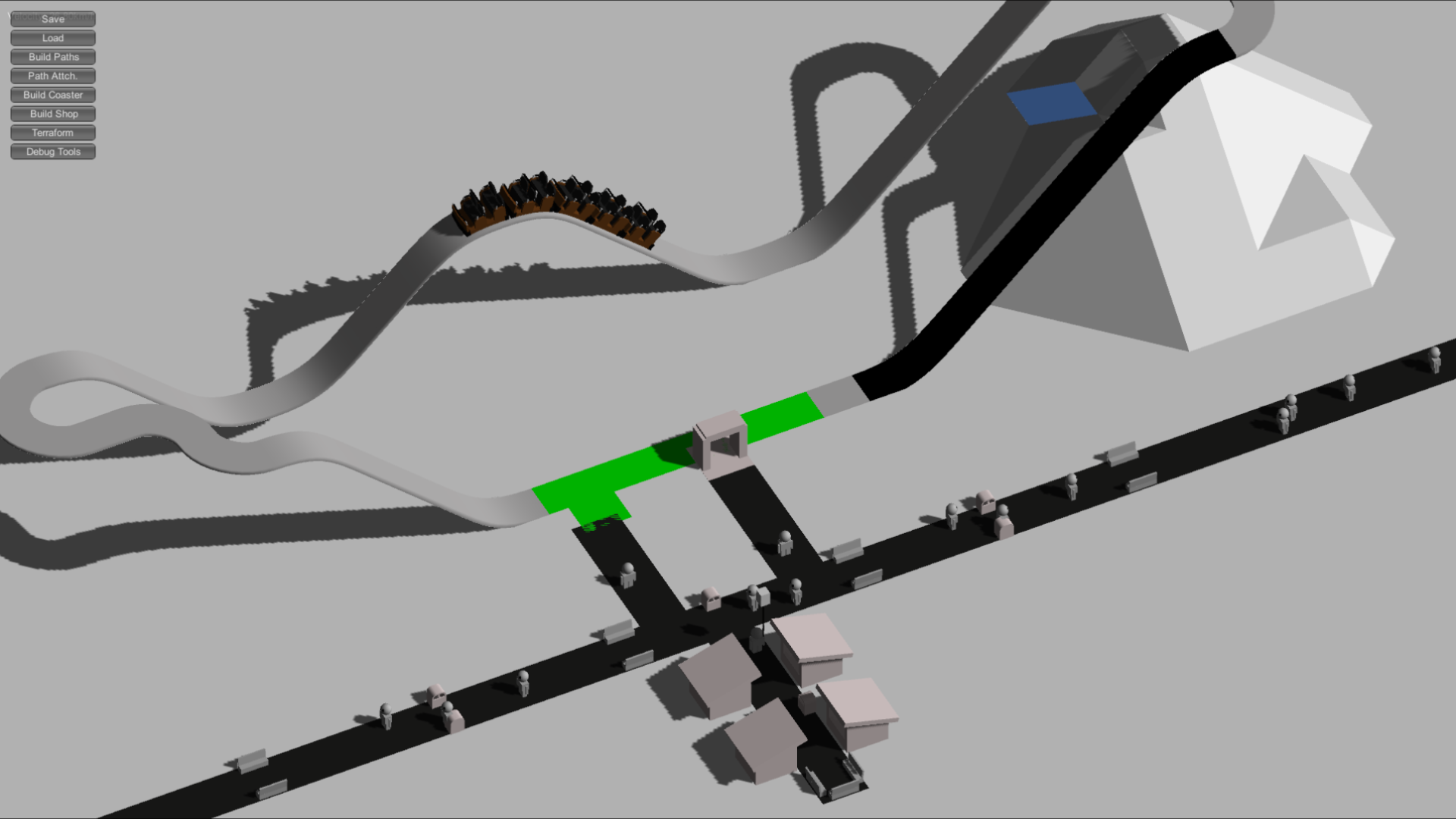
I kept working on it and had a very basic version of a theme park sim running after about a month, at least enough of it to know that I should be able to make a full game.
The remaining big question was art and of course funding as there was no company back then. I posted in the collaboration request section of the TIGSource forums because I was quite excited and convinced by the project at this point, looking for an artist who might be willing to work on this together, eventually splitting revenues if it ever turns into a commercial game.
Someone posted the offer on Twitter and that's how Garret heard about it. We got along really well and that’s pretty much how Texel Raptor came to be.
June 2014 - First showcase
Work continued over the next couple of months and we were really excited about how the prototype was shaping up. We decided to post a screenshot on Reddit of what we had created so far and we were surprised by how many seemed genuinely excited about it which was really encouraging to us. This gave us hope that it could eventually become a full game. But even though we were willing to embrace the indie-developer lifestyle, we couldn’t avoid costs like rent and essential software licenses—expenses we had to cover before we could release anything to players. So we had to figure out that part to be able to continue.
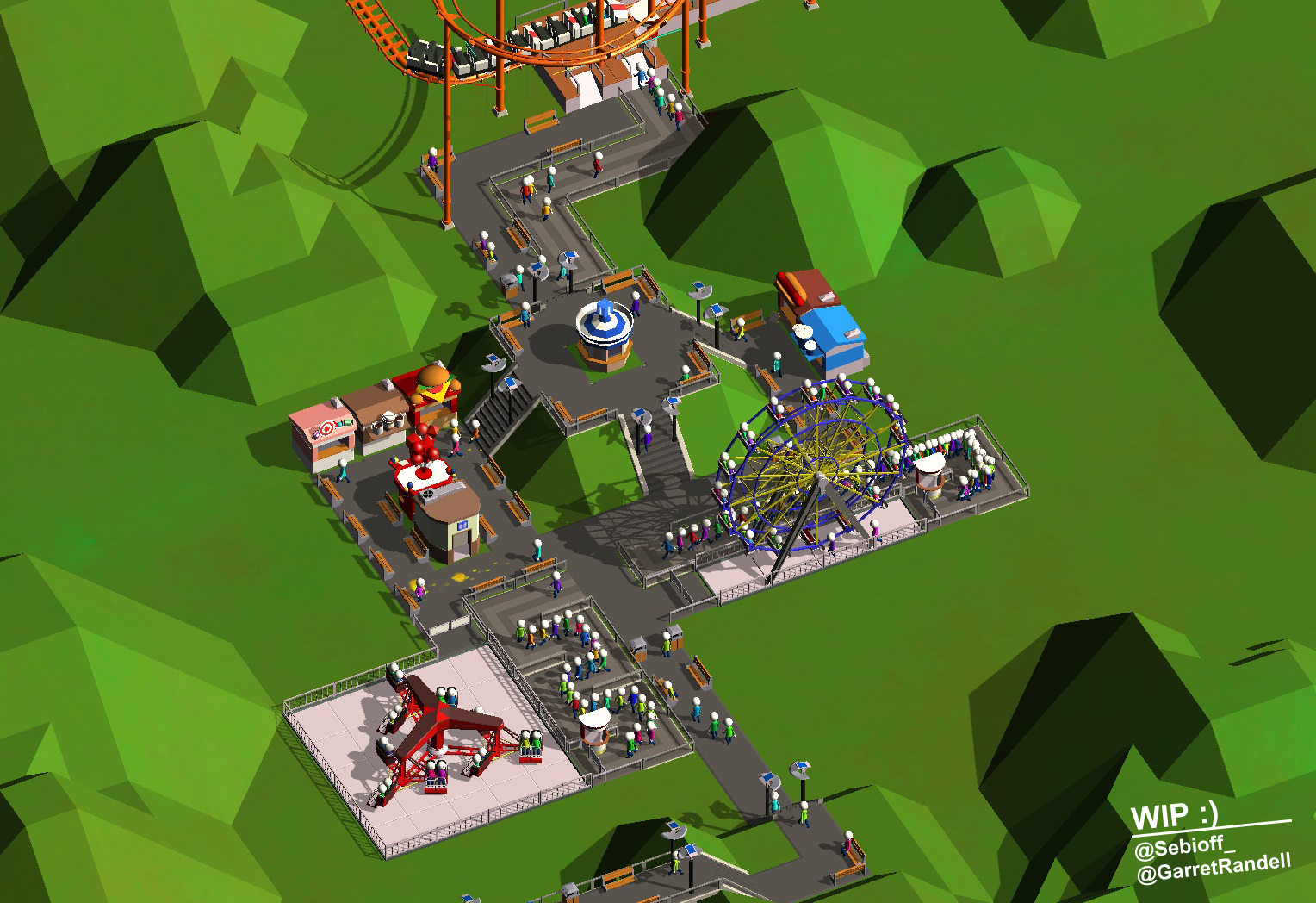
August 2014 - Kickstarter
While we initially intended to try and develop Parkitect using our own savings we realized it wouldn’t be enough and we assumed finding a publisher would be unrealistic. We started considering a Kickstarter, but we were also really nervous thinking “What if we don’t deliver a good game? What if we can’t even finish developing it?”. After a lot of consideration and careful thought we however felt convinced we could do it and we finally decided to launch the Kickstarter. We shared what we had built so far and what our dreams for what Parkitect could become, hoping we might reach the funding needed to make it all happen. What followed absolutely blew us away, the support we received was beyond anything we expected!
The Kickstarter backers were also really helpful as they kept suggesting things to add into the game. For example: One guy on Twitter suggested that people should leave footprints after walking through puke. Shortly after, that was in the game and we were able to reply with a video showing it working. Being able to iterate and interact with people this quickly and directly was super thrilling. It was a bit like we had given the initial vision and then designed the rest of the game collaboratively with the community.
Somewhere around here is also where we were joined by Gordon from A Shell in the Pit, who was working with sound effects and music which was a great addition to the team. So now we were three!
September 2014 - Kickstarter Build
We gave our Kickstarter backers access to one of the pre-alpha versions of the game. By that time, our prototype had developed into something that looked much more like a real game. Many of the basic building options were now in, and the coaster designer had more options. Roughly five months after development had started, you could already see a lot of what Parkitect is today.
Back then however we were actually quite unsure about how to approach decorations in the parks. We wanted to make it a thing but if we did, we knew we needed to be able to create a lot of them which felt really daunting and we also felt like if there’s decorations available they should have some kind of gameplay impact and not just be entirely cosmetic. Seeing the parks that the Kickstarters would build convinced us we had to do it though, as we could see the potential of what they could also build if they had access to a lot of decorations. The idea to also make sure guests couldn’t see through decorations, making it possible to hide workers in the park came up in a chat between Garret and Maddy over at EXOK games. Even though we immediately knew we wanted to add this, it would take quite a while before we figured out exactly how.
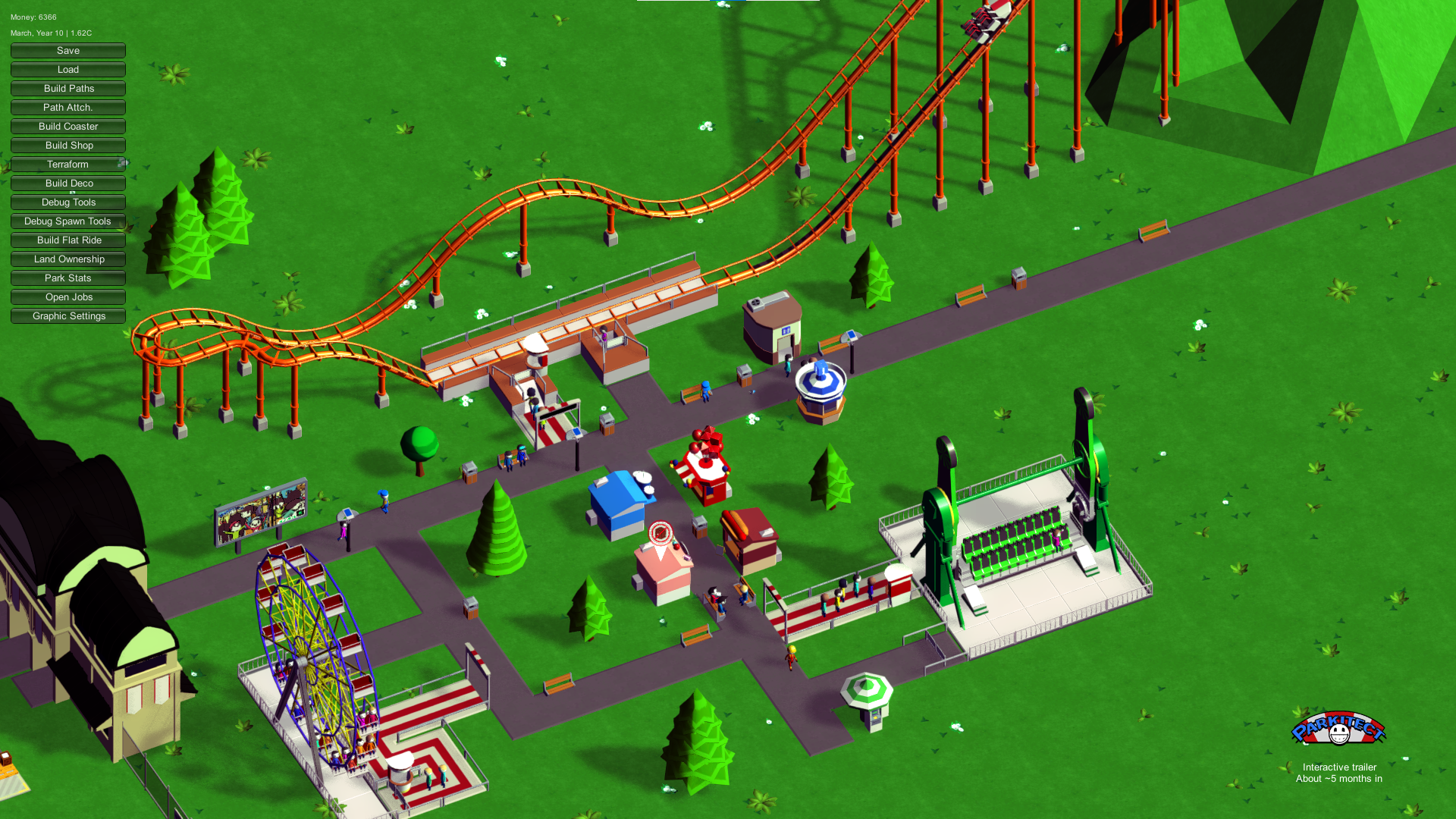
Pre-Alpha - November 2015
While we still had a long way to go, the game was beginning to look and feel much closer to what we had envisioned. There was a lot more content now, and although it was still rough around the edges and completely missing a real UI, we were very happy with the progress we’d made. Still, we kept feeling like we needed to add more content—more rides, more decorations—to make sure the player always had something fun to build. The game was still just a sandbox, so these elements were especially important at the time. This aside we kept getting good support from the growing community following and big Youtubers like Nerd³ also were kind enough to showcase Parkitect which was invaluable to us at the time.
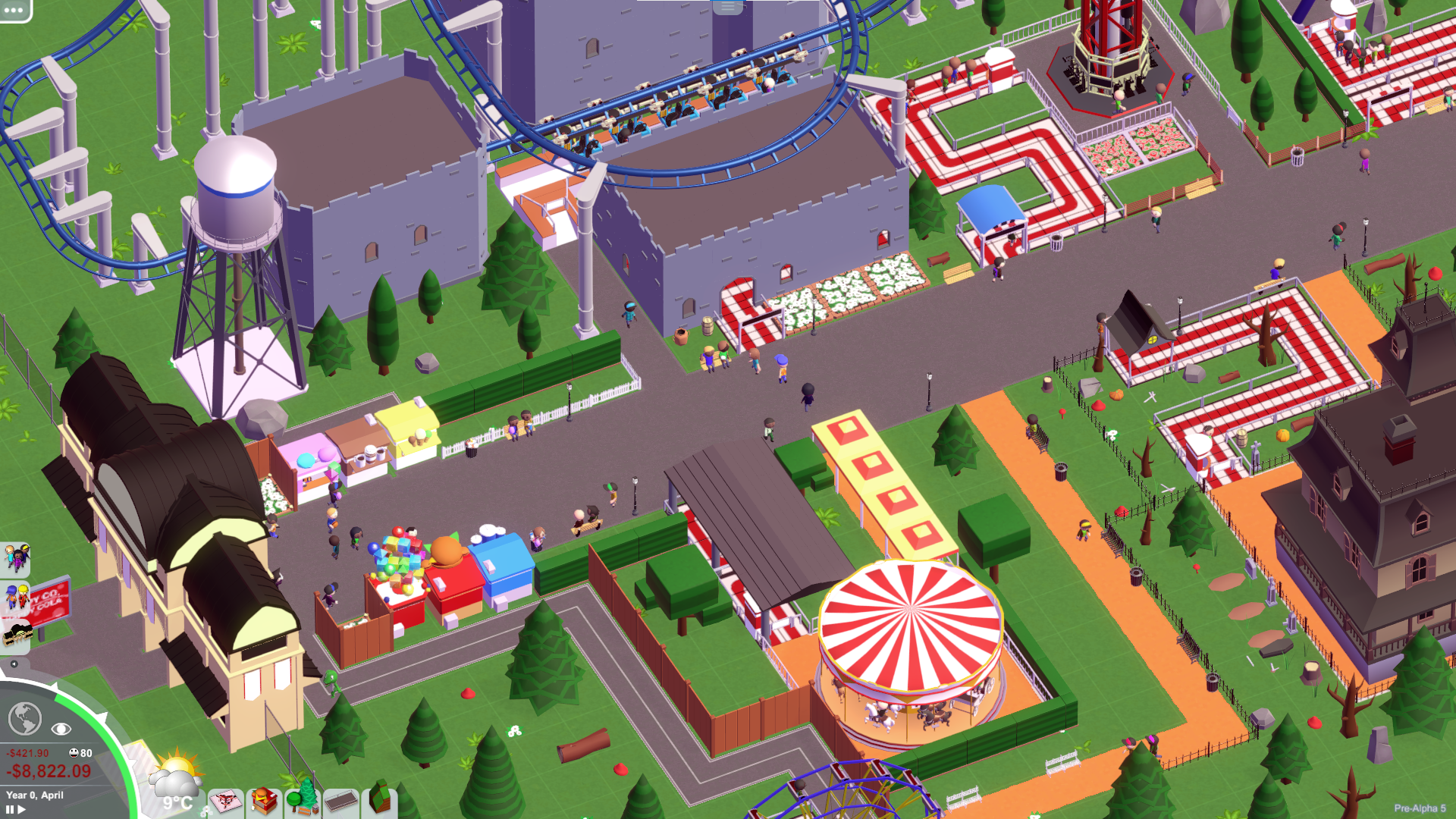
May 5th 2016 - Early Access Release
It was time to release Parkitect in Early Access! Since our Kickstarter, we already had plenty of players who had given us valuable feedback to work from, but it was still nerve-racking to set it loose in the wild and let anyone start playing it. Luckily, it all went well in the end, and we were incredibly happy to see more people enjoying the game.
The community presence and support kept growing too. We had two amazing guys named Tim and Luuk who ran a community website called Parkitect Nexus. They were in fact the first to be able to mod the game even before we started officially supporting mods. They were also the first to host the Build Challenge which also started on the Parkitect Nexus site. After some time they joined the team as contractors to help work on the game as they had such a great understanding of it. They were of great help and contributed a lot to Parkitect and the team. In fact they helped create the official modding support and helped us finally figuring out how to implement the line-of-sight system for the decorations and ratings. Something that had been pretty tricky to figure out.
Later in 2017 the Build Challenge would become official, as Tim and Luuk didn’t have time to keep running it but we all still wanted to keep it alive. This now allowed players to submit their own themed rides in this monthly competition to be included in the game as official blueprints. We were always amazed by the creativity that poured in, and the tradition has continued ever since!
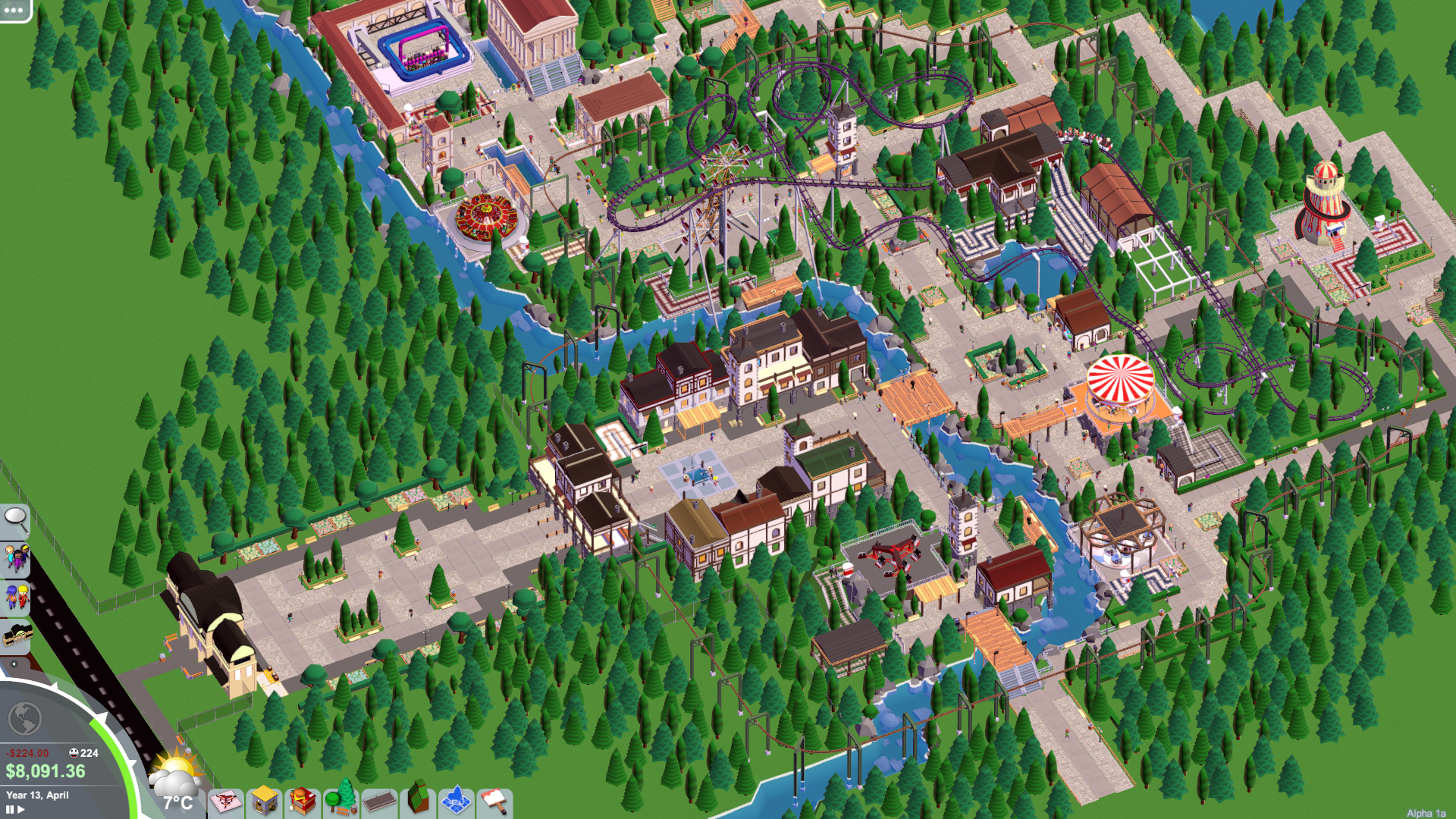
November 2018 - 1.0 Release
Parkitect was released in 1.0 a good 4.5 years after development began. By then, the game had come a long way from its early prototypes.
During EA, we had added the scenery visibility & rating system in Alpha 19, night mode with lighting in Beta 5, and of course lots of changes and additions to how roller coasters worked and what options players had when building them - and so much more!
Version 1.0 also introduced the tutorial and campaign mode, both of which had been in the works for a long time and highly requested by the community. Along the way, the campaign mode had grown far beyond what we had originally planned, and with the help of the great Silvarret and Joshua Tjarks, we ended up with 26 scenarios included in it.
As the community grew, players began creating their own events. A handful of incredibly dedicated community creators set up the Parkitect Depot and started organizing events like the Battle of the Builders tournament and the long-running Diorama Challenge, both of which showcased just how talented the community is.
Throughout EA, we received a huge amount of player input and learned how people were really playing the game as we continued developing it. It shaped the direction of Parkitect far more than we had expected!
Not to mention how much many community members helped us by building parks to showcase in official screenshots—creators like TheDeeGee, Cavy, and AstroTron. We also had incredible modders like Kenney and Marnit who created some truly awesome mods. Kenney even made the Parkitect.exe icon for us, which is still being used today. And MaxFreak, of course, has been moderating our Discord for what feels like forever. These are just a few examples. We can’t overstate how important all these amazing people have been over the years—and still are. We really do have the best community ever!
December 2020 - Multiplayer update
While we had finally reached 1.0, the work didn’t really stop. Multiplayer had been one of the most requested features throughout development, but we always saw it as so unrealistic that it became a running joke within the team. We’d say things like, ‘Okay, yeah, let me just finish this quickly and then we’ll do multiplayer,’ or, ‘Hold on, let me just enable the multiplayer feature checkbox.’ Parkitect was never built with multiplayer in mind, so adding it would require an enormous amount of work.
As we knew we would eventually want to make a new game, we also realized our team needed to grow a bit. So in 2019, Patrick joined us. We had already known each other for many years, and together we worked on the DLCs while also prototyping our next game. At some point we realized that—even though it would be a lot of work—adding multiplayer might actually be doable. Since it was such a popular request, we decided to go for it. We essentially had to go through every line of code to make it happen, and the whole process took about six to nine months from start to finish.
So two years after 1.0, and shortly after the release of our second DLC, Booms & Blooms, we managed to release the multiplayer update. We expected it to be a popular addition to the game, but once again our community surprised us by completely surpassing our expectations.
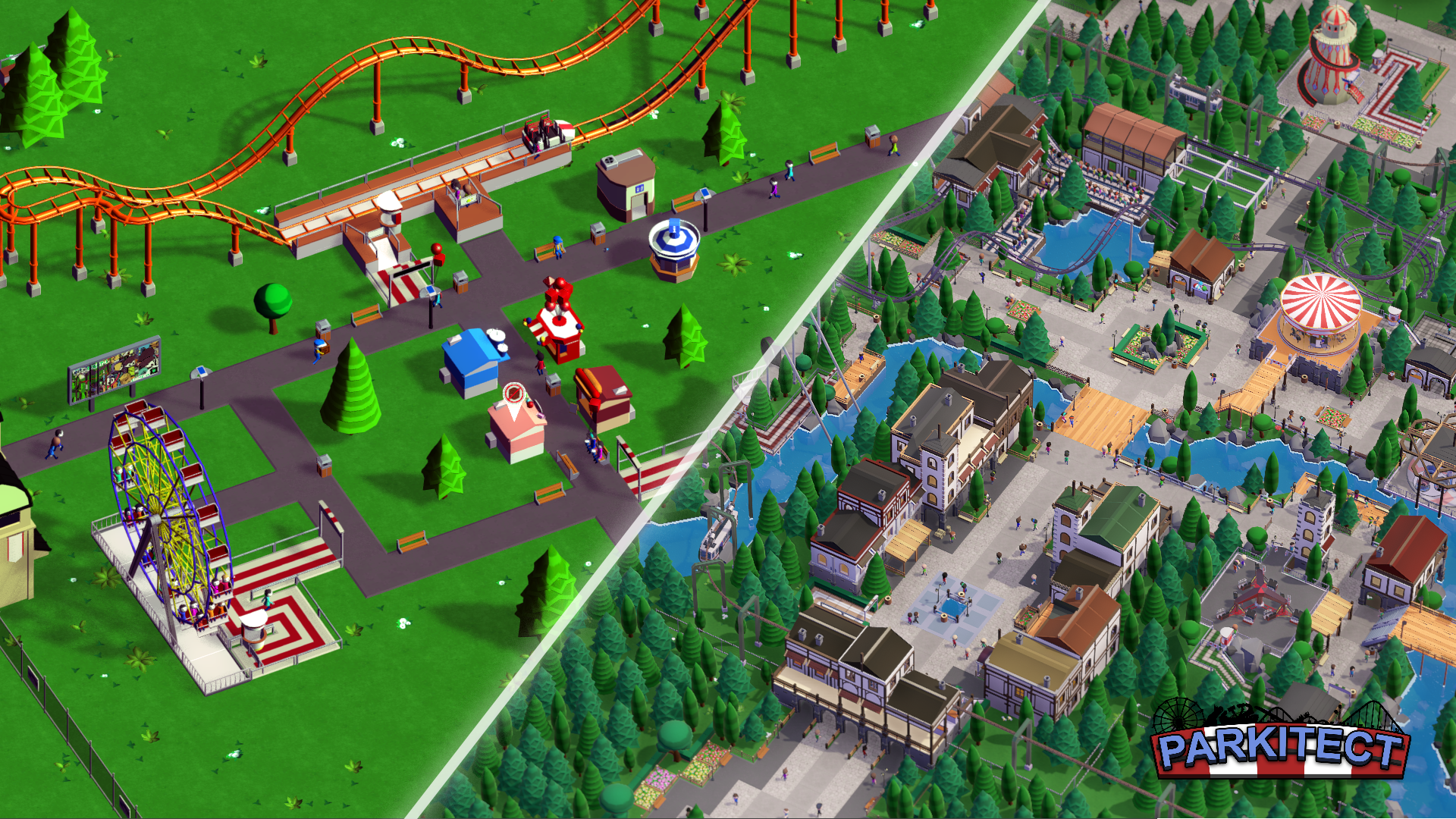
November 2025 - Today
Seven years after release—and over eleven years after we began this journey—we’ve released three DLCs and countless updates in the form of almost 200 patches*. We have a wonderful community that has created nearly 30,000 mods and items on the Steam Workshop, not to mention all the amazing parks that Parkitect players have built over the years with such care, detail, and creativity. It means a lot to us that we could provide a tool that helped make these creations possible. Seeing how far things have come since we first started tinkering with roller coaster physics back in 2014 has been incredibly rewarding.
Thank you each and every one of you for supporting us in creating Parkitect, contributing to it, and helping make Parkitect what it is today. In our anniversary video below, we’ve highlighted some absolutely gorgeous parks, many from our amazing creators in the community, as well as some of the influencers who have supported us over the years. It’s thanks to you that Parkitect is what it is today.
